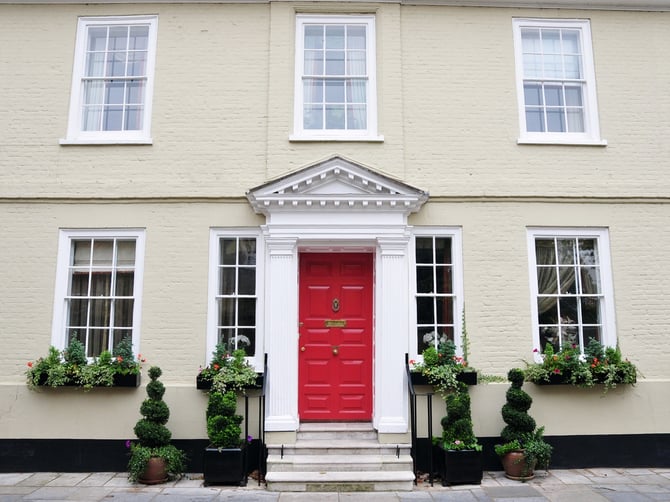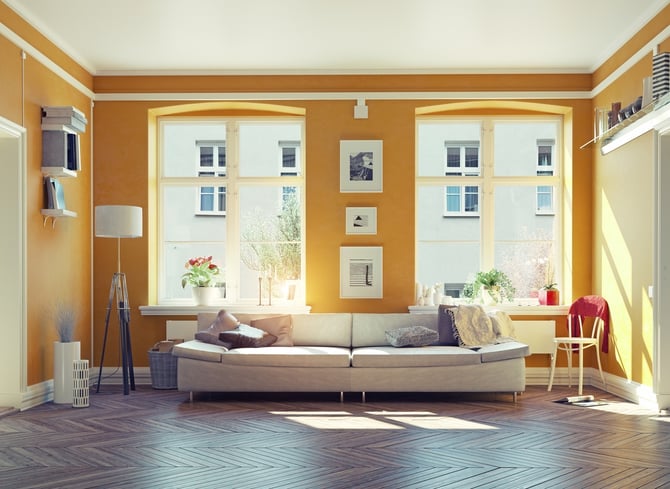Wondering how to reduce traffic noise and other disturbing sounds that enter the home?
You need noise reduction windows!
The majority of noise pollution enters a house, apartment, or other building through the windows and doors. By enhancing your windows with a glazing system to reduce noise, you can dramatically enhance the acoustics of your interior and protect yourself and your family from the negative effects of noise pollution.
Glass engineers have developed techniques like double glazed windows for sound reduction as well as the use of thicker glass or specialised glass within double glazing insulated glass units (IGUs) in order to offer property owners the perfect calm the human ear craves (and deserves).
With double glazed windows, you can effectively insulate your property from disturbing sound waves. However, in order to get the best value when using double glazing for noise reduction, you need to understand the facts on sound-reducing windows.
You need to know how they work, what options you have, and how to avoid losing money and sacrificing the value of your property in order to gain the acoustic benefits you expect.
1. Double Glazing Windows is the Best Option For Sound Reduction

How to reduce noise coming through home windows?
You need a double glazing system.
With double glazing, an insulated glass unit replaces your single pane of glass. An IGU consists of two panes of glass separated by an air space. Unlike other options for sound reduction like secondary glazing or using a series of do-it-yourself methods like noise reducing curtains and acoustic sealing, double glazed windows are powerful enough to make a noticeable difference to your ears.
2. The Human Ear Needs Genuine Noise Reduction
The reason it’s almost impossible to fully stop the noise and vibrational effects of car alarms, noisy neighbours and rumbling motors by using minor noise reducing solutions, is that these window noise reduction techniques are not powerful enough to make a significant difference.
The human ear needs at least 3 decibels of sound reduction to detect a difference. Soundproof curtains for residential properties, for example, may only offer around 5 decibels of noise reduction.
3. The Wrong Noise Reduction Solution Will Sacrifice Other Features of Your Property

You can get a noticeable difference with secondary glazing, particularly if you use a special type of glass such as laminated glass, use a wide air space and if your secondary glaze is a very thick sheet of glass.
If you are considering investing in heavy duty secondary glazing, keep in mind that this option will not work for some types of windows such as sash or double hung windows, and it will diminish the aesthetic value of your windows; secondary glazing generally is not the most attractive option.
4. Retrofit Double Glazing Costs About The Same As Secondary Glazing
What a lot of property owners don’t realise is that retrofit double glazing costs about the same amount as secondary glazing. With retrofit double glazing, you can experience the best possible noise reduction. And, your windows will look beautiful.
As retrofitting is the process of converting your existing timber windows by installing an IGU in place of your current single glazed glass, you can retain your home’s original character, which you can’t do with secondary glazing or new double glazed windows. Even better, retrofitting works with any type of wooden window, including sash windows and other models commonly found in heritage buildings.
5. Retrofit And New Double Glazed Windows Are Not The Same Things

A lot of people don’t realise how cost-effective noise reduction windows can be because they assume retrofit and new double glazed windows come with the same price tag.
This simply isn’t true.
While both retrofit and new double glazed windows involve installing an IGU, and as such is the best way to noise proof windows, that’s as far as the similarities go. With new double glazed windows for noise reduction, you’ll have to invest thousands more than with a retrofit, your entire window frame will have to be torn out and a new system installed, and your new windows will look different.
6. Not All Retrofitting Systems For Timber Windows Are Created Equal
While retrofitting is less expensive than installing new double pane windows for noise reduction, you should do your research regarding all double glazing including retrofit double glazing to avoid any costly mistakes.
Standard double glazing and retrofit double glazing systems can cause premature rotting of your wooden window frames meaning failed double glazing.
Thermawood's patented retrofit double glazing system is designed with a full drainage system to ensure the longevity of your timber windows and the ultimate performance in noise reduction windows.
7. Timber Windows Are The Best For Noise Reduction

That being said, if you do have timber windows, you definitely should try to keep them if you want to dampen sounds as much as possible.
Wood acts as a natural insulator for acoustic vibrations.
The cellular structure of timber acts to convert sound energy into heat energy naturally. This serves to muffle sound more than windows made from other materials.
8. There Are Different Types Of Noise Reduction Glass
You don’t actually have to use the same level of noise reduction for your entire home or building.
In fact, you’ll save money and still enjoy your desired acoustic benefits simply by customising your retrofit double glazing to suit the needs of each room.
For example:
Rooms that are facing a busy street will require thicker glass, a wider air space, or a special glass such as laminated or acoustic glass for the right amount of noise reduction.
Standard laminate is used most often as the ratings between standard laminate and acoustic glass aren’t too much. However, the price difference is, with acoustic glasses are much more expensive.
Other areas, such as an upstairs room overlooking your garden, will only require a standard IGU to achieve excellent results.
9. Effectively Reducing Sound Is More Doable Than You Think

Retrofit double glazing itself will reduce noise by about 20-25%, but by incorporating laminate glass into retrofit double glazing we can up that rating to about 50-55%. We can go beyond that again with special acoustic glasses.
By reducing noise by 10 decibels, which is easy for Thermawood to do, you actually halve the sound you are hearing.
Acoustic seals are also used. Anything that opens, Thermawood put acoustic seals in to further reduce noise and drafts at the same time.
10. Noise Reduction Windows Are Good For Your Health
Learning how to reduce the noise coming through home windows isn’t just about enhancing the quality of your life. Noise pollution is a very real risk to wellbeing. Prolonged exposure to loud sounds can affect our sleep and can lead to problems with anxiety as well as hearing loss.
Sound reducing windows aren’t just a luxury, they are a factor that can enhance quality of life.
The more you can do to ensure you have a quiet, healthy home to retreat to, no matter how loud, chaotic or hectic life may be outside, the better. Your windows should be the feature that promotes peace and wellbeing, rather than your biggest vulnerability.






